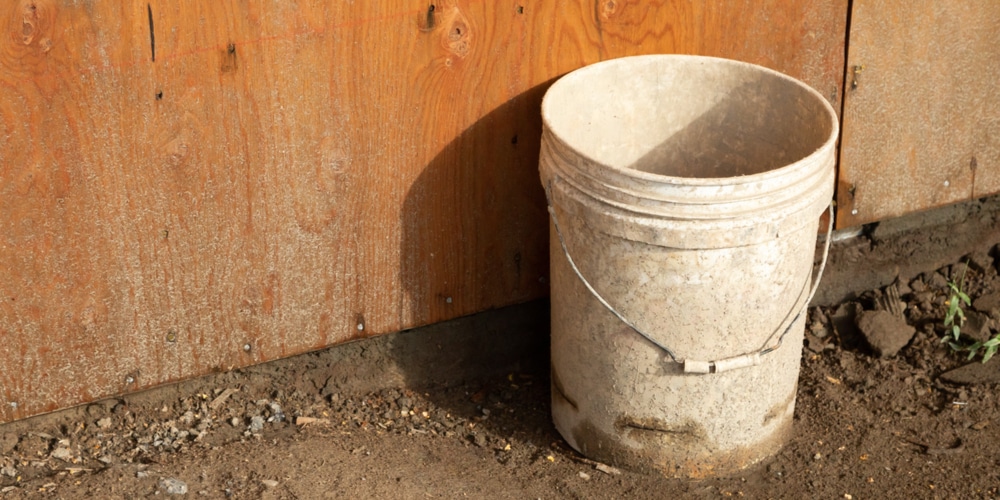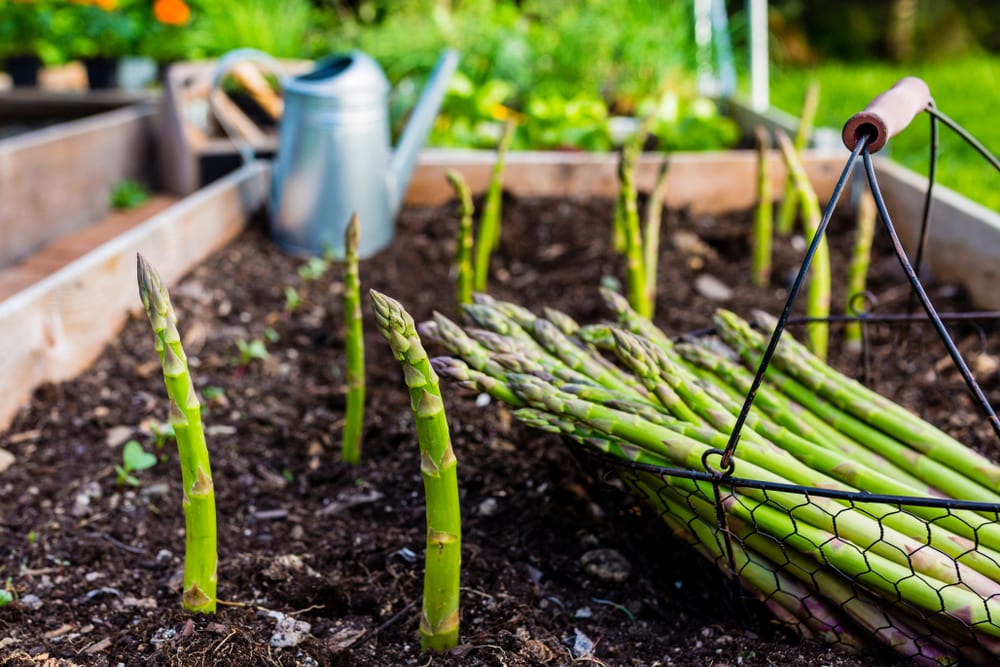If you’re a gardener, you may wonder if planting asparagus in pots is possible. The answer is yes – it’s a great way to get your fix for this delicious vegetable, even if you don’t have a lot of space!
Asparagus is a tough, perennial vegetable that belongs in every garden. Asparagus may provide for years of harvest if appropriately planted, but growing asparagus in containers may seem appealing if you don’t have the space for an entire row.
Is It Possible To Grow Asparagus In Containers?

Asparagus is a delicious and versatile vegetable used in various recipes. It is also relatively easy to grow, making it an excellent option for those new to gardening. One common question about growing asparagus is whether or not it is possible to do so in containers.
The answer is yes! While asparagus requires well-drained soil and full sun exposure, it can be easily grown in a pot or container. Just be sure to choose a large container to accommodate the plant’s roots and provide plenty of water during the growing season.
Benefits Of Planting Asparagus In Containers
Asparagus is a fast-growing, long-lived perennial vegetable that is a welcome addition to any home garden. Not only does asparagus have a delicious nutty flavor, but it is also packed with vitamins and minerals. Additionally, asparagus is incredibly easy to grow and can even be grown in containers. Here are just a few of the benefits of planting asparagus in containers:
- Asparagus is a low-maintenance crop. Once established, asparagus requires very little care. Water the plants when the soil feels dry to the touch and fertilize them once a year.
- Asparagus is a space-saving crop. Asparagus can be stacked on top of each other when grown in containers, allowing you to maximize your gardening space.
- Asparagus can be grown year-round. Asparagus can be harvested from early spring through late fall in most climates. However, if you live in a warm climate, you can grow asparagus in containers indoors, allowing you to enjoy fresh asparagus all year long!
- Asparagus is a versatile vegetable. Not only can it be eaten fresh, but asparagus can also be canned, frozen, or pickled.
- Growing asparagus in containers prevents diseases and pests, which can be a problem in the garden.
- It is easier to control the soil quality when the plants are in containers. This is important because asparagus requires well-drained, nutrient-rich soil to thrive.
- Container-grown asparagus is less likely to be damaged by weeds or pests. This is because the roots are more sheltered, and the plants are easier to keep clean.
- Asparagus grown in containers can be moved to a warmer location during cold weather. This protects the plants from frost damage and allows them to grow for a longer season.
Planting Asparagus in Pots
Now that you know the benefits of growing asparagus in containers, here’s how to get started:
1. Start with a 12-inch deep container at least 18 inches wide. If you are using a pot, make sure it has drainage holes.
2. Fill the bottom of the container with 3 inches of gravel or rocks to improve drainage.
3. Add a layer of potting mix, and then top it off with 1 inch of organic compost.
4. Water the soil until it is evenly moist, and then allow it to drain before planting your asparagus crowns.
5. Place the crowns in the soil, so they are spaced 6 inches apart, and then cover them with 2 inches of soil.
6. Water the crowns deeply, then place the container in a sunny spot.
With a little care, you can enjoy fresh asparagus from your backyard!
Growth Requirements
Asparagus is a perennial vegetable that can be grown in many climates. However, it does have some specific requirements to thrive. First and foremost, asparagus requires well-drained soil. The plant roots are very sensitive to excess moisture and will quickly rot if the soil is too wet.
Additionally, asparagus needs full sun to produce an abundance of spears. The plant will also need a period of dormancy to rest and recharge. Typically, this means that asparagus should only be grown in regions where winters are cold enough to bring about a significant drop in temperature. The plant should be fertilized regularly, and the bed should be mulched to help retain moisture.
By understanding the growth requirements of asparagus, gardeners can ensure that their plants will be healthy and productive for many years.
Harvesting Asparagus
As any asparagus aficionado knows, the wait for a harvest can be interminable. It takes a full three years for the plant to reach maturity, and even then, it’s a delicate balance between allowing the plant to develop properly and harvesting too early.
If you try to harvest too early, you will not only be disappointed with the meager results but also damage the plant and reduce its yield in future years. Patience is key when growing asparagus. In the first year, you’ll see the plant produce spears.
Allow these to grow into bushy stems, but pick off any berries that form. In the fall, cut the asparagus down to ground level. The next year, it will begin to grow again. This process repeats itself each year until, finally, you’ll be rewarded with a bountiful harvest in year three. So if you’re patient enough to wait, growing asparagus can be a delicious and rewarding experience.
Asparagus is a notoriously finicky vegetable, and harvesting it is no exception. The spears must be cut at just the right time – too early, and they will be tough and woody, too late and overgrown and mushy. They should also be cut with a sharp knife, leaving about three inches of stem under the soil level.
After the initial harvest, it’s essential to let the plant rest and grow new spears. This process can be repeated several times throughout the year, giving you a steady supply of fresh asparagus. With a bit of patience and attention to detail, you can enjoy this delicious vegetable all season long.
Planting Asparagus in Pots: Conclusion
Container gardens are becoming increasingly popular as people look for ways to maximize their outdoor space. While most vegetables require a fair amount of room to grow, some can be successfully grown in pots.
Asparagus is one of these vegetables and can be a great addition to any container garden. Following the tips in this article, you can enjoy fresh asparagus from your backyard!

